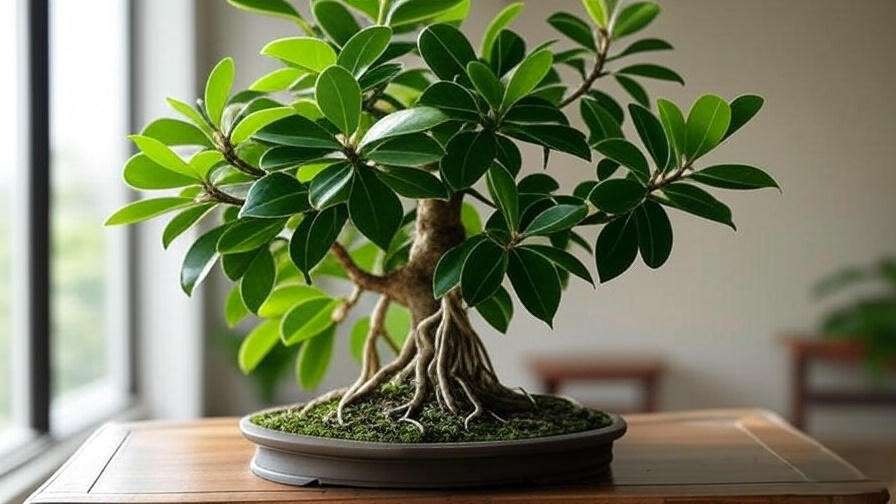Imagine a miniature tree, its glossy green leaves shimmering under soft light, twisting roots telling a story of resilience and artistry—this is the magic of a ficus bonsai tree. Whether you’re a beginner captivated by its charm or a seasoned enthusiast aiming for perfection, growing a thriving ficus bonsai can feel like a rewarding journey. But it comes with challenges: drooping leaves, stubborn pests, or confusion about watering. Fear not! This comprehensive guide, crafted with insights from over a decade of bonsai cultivation and consultations with horticulturists, will equip you with expert tips to ensure your ficus bonsai flourishes. From light and watering to pruning and pest control, we’ll cover everything you need for stunning results. Ready to transform your bonsai into a living masterpiece? Let’s dive in! 🌟
Understanding the Ficus Bonsai Tree 🌳
What Makes the Ficus Bonsai Special? ✨
The ficus bonsai, derived from species like Ficus retusa (also called the banyan fig) or Ficus ginseng, is a favorite among bonsai enthusiasts for its forgiving nature and striking features. Its glossy, oval-shaped leaves and potential for dramatic aerial roots create a tropical aesthetic that’s both elegant and approachable. Unlike some bonsai species that demand precise conditions, ficus varieties thrive indoors, making them ideal for homes or apartments. Their adaptability to varying light and humidity levels suits beginners, while their styling potential excites advanced growers. With proper care, a ficus bonsai can live for decades, becoming a cherished part of your space.
Benefits of Growing a Ficus Bonsai 🌟
Beyond their beauty, ficus bonsai trees offer practical benefits. They elevate home decor, adding a touch of nature to modern interiors. Caring for a bonsai fosters mindfulness, as the daily rituals of watering and pruning can be meditative, reducing stress. Scientifically, ficus plants contribute to air purification by filtering pollutants and increasing humidity, especially in dry indoor environments. For urban dwellers, a ficus bonsai brings a slice of the tropics into small spaces, creating a calming oasis.
Setting Up Your Ficus Bonsai for Success 🪴
Choosing the Right Ficus Bonsai 🛒
Selecting a healthy ficus bonsai is the first step to success. Look for vibrant, glossy leaves without yellowing or wilting, a sign of good health. Check the trunk for firmness and roots for stability—avoid trees with soft or mushy bases. At nurseries or online, reputable sellers like Bonsai Boy or local bonsai clubs ensure quality. Expert Insight: Avoid common mistakes like choosing a tree with sparse foliage or one potted in poor soil, as these can indicate stress or improper care. A healthy ficus bonsai should feel balanced and lively.
Ideal Environment for Your Bonsai 🌞
Ficus bonsai trees thrive in conditions mimicking their tropical origins. They need bright, indirect light—think near a south- or east-facing window with filtered sunlight. Direct sun can scorch leaves, while low light causes leaf drop. Maintain temperatures between 65-85°F (18-29°C) and avoid cold drafts or sudden temperature swings. Humidity is crucial; aim for 50-70% humidity using a tray of pebbles with water or a humidifier. Tip: If your home is dry, mist the leaves daily to mimic a tropical climate.
Essential Care Tips for a Thriving Ficus Bonsai 🌼
Watering Your Ficus Bonsai Correctly 💧
Watering is where many bonsai beginners stumble, but it’s simple with the right approach. Ficus bonsai prefer consistently moist soil, but not soggy. Water thoroughly when the top inch of soil feels dry, ensuring excess water drains out. Use a watering can with a fine spout to avoid disturbing the soil. Overwatering leads to root rot, signaled by yellowing leaves, while underwatering causes wilting. Tip: Invest in a moisture meter for precision, especially if you’re new to bonsai care. In general, water every 2-4 days, adjusting based on season and humidity.
Soil and Fertilization 🌱
The right soil mix is critical for a ficus bonsai’s health. Use a well-draining blend, such as 50% akadama, 25% pumice, and 25% organic compost, to ensure aeration and nutrient retention. Fertilize every two weeks during the growing season (spring and summer) with a balanced, water-soluble fertilizer (e.g., 10-10-10). In fall and winter, reduce to once a month. Expert Insight: Organic fertilizers, like fish emulsion, promote steady growth, while synthetic options offer quick nutrients—choose based on your bonsai’s needs. Always dilute fertilizer to half-strength to avoid root burn.
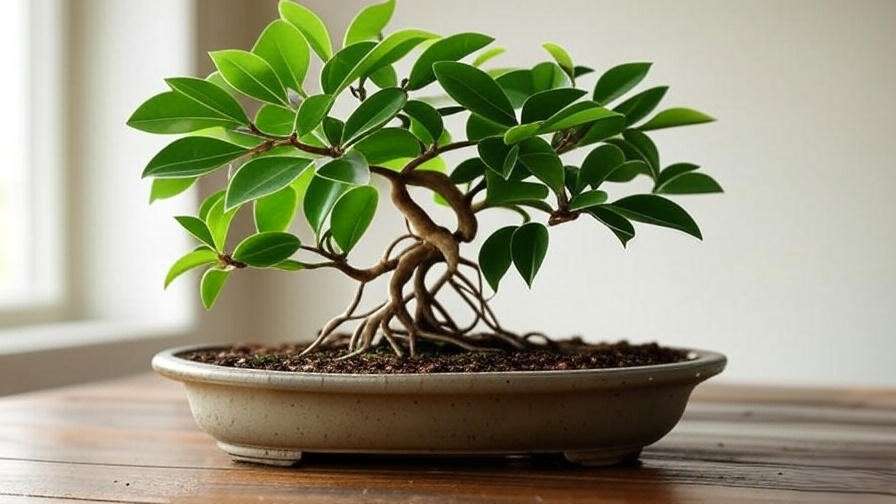
Pruning and Shaping Your Bonsai ✂️
Pruning keeps your ficus bonsai compact and aesthetically pleasing. Trim new shoots back to 2-3 leaves after 6-8 leaves form to encourage branching. Use sharp, sterilized bonsai shears for clean cuts. For shaping, wiring can guide branches into desired forms, but wrap wires loosely to avoid scarring. Defoliation, removing leaves to reduce leaf size, is an advanced technique—do it in spring, ensuring the tree is healthy. Example: A ficus bonsai pruned to an informal upright style can transform from leggy to lush in one season with consistent care.
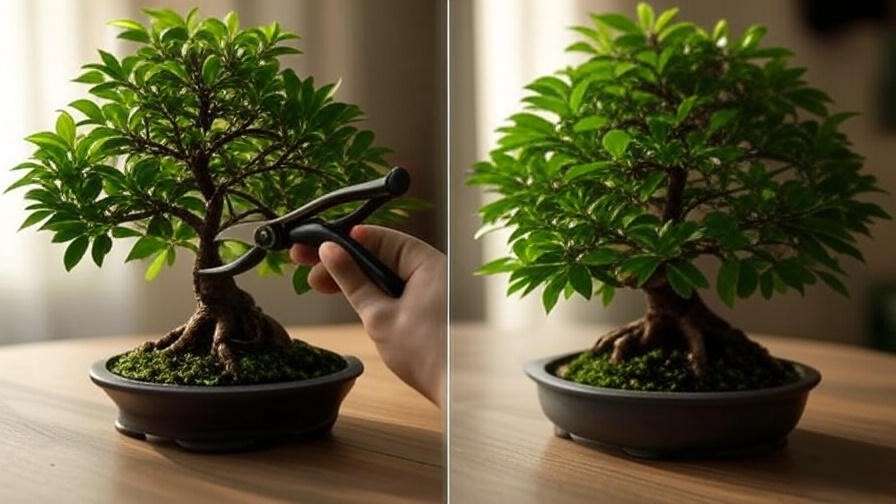
Repotting Your Ficus Bonsai 🪣
Repotting every 1-2 years refreshes the soil and prevents root-bound issues. Spring is the best time, when the tree is actively growing. Gently remove the tree, trim about a third of the root mass, and replant in a slightly larger pot with fresh soil. Choose a shallow bonsai pot to maintain proportions. Step-by-Step:
- Water the tree lightly a day before.
- Remove from the pot and untangle roots.
- Trim long or damaged roots.
- Place in a new pot with fresh soil mix.
- Water thoroughly and keep in shade for a week.
Common Challenges and How to Overcome Them 🚨
Preventing and Treating Leaf Drop 🍂
Leaf drop is a common issue, often caused by stress from light changes, overwatering, or drafts. If your ficus bonsai starts shedding leaves, check its environment first. Ensure it’s getting bright, indirect light and stable temperatures. Reduce watering if the soil is soggy, and increase humidity if the air is dry. Tip: After moving your bonsai to a new spot, give it 1-2 weeks to acclimate before adjusting care routines. Gradual changes prevent shock.
Pest and Disease Management 🐞
Ficus bonsai are prone to pests like spider mites, scale, and aphids, especially in dry conditions. Inspect leaves weekly for webbing, sticky residue, or tiny insects. Treat infestations with neem oil or insecticidal soap, applied every 7-10 days until clear. Prevent issues by maintaining humidity and cleaning leaves with a damp cloth. Expert Insight: Early detection is key—check the undersides of leaves, where pests often hide. Fungal diseases, like root rot, stem from overwatering; ensure proper drainage to avoid them.
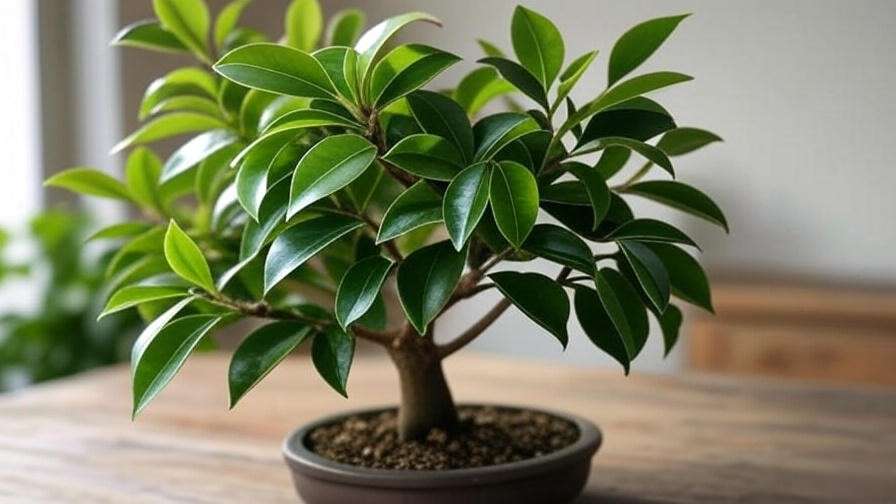
Troubleshooting Yellowing Leaves or Stunted Growth 🥀
Yellow leaves or slow growth often signal nutrient deficiencies, poor light, or root issues. Test soil pH (aim for 6.0-6.5) and adjust with a balanced fertilizer if needed. If roots are cramped, repot promptly. Low light can also stunt growth—move the tree to a brighter spot or use a grow light. Actionable Steps:
- Check light levels and move to a brighter area if needed.
- Test soil moisture and adjust watering.
- Apply a balanced fertilizer to address nutrient gaps.
Advanced Care Techniques for Stunning Results 🌟
Creating Aerial Roots for Dramatic Effect 🌿
Aerial roots give ficus bonsai a dramatic, ancient look. To encourage them, increase humidity around the tree using a humidity tray or misting. Wrap the trunk base with damp sphagnum moss and cover with plastic to trap moisture, checking weekly for root growth. Once roots form, guide them into the soil for stability. Example: A Ficus retusa with cascading aerial roots can become a showpiece in just 6-12 months with consistent care.
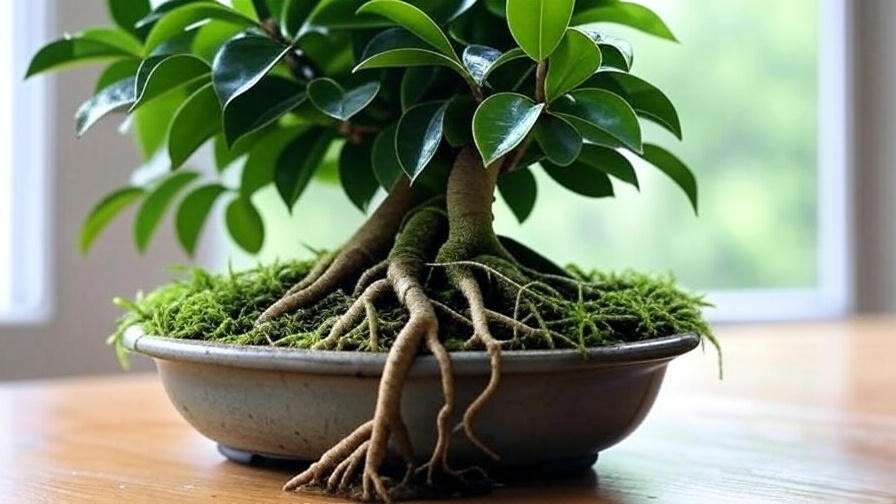
Seasonal Care Adjustments ❄️☀️
Ficus bonsai need tailored care by season. In winter, reduce watering and protect from cold drafts, keeping temperatures above 60°F (15°C). Use a grow light if natural light dips below 6 hours daily. In summer, increase watering and misting to combat heat, and move the tree outdoors (in shade) if possible. Tip: A grow light set to 12 hours daily mimics tropical conditions year-round, ensuring steady growth.
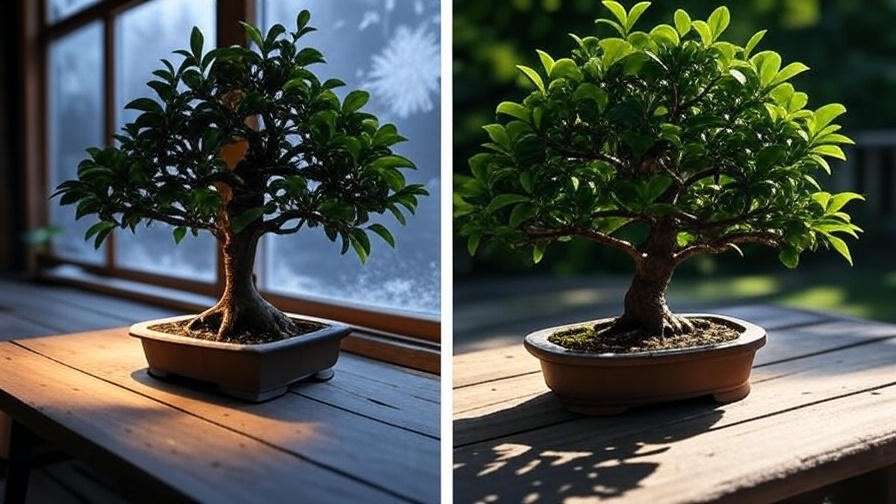
Styling Your Ficus Bonsai Like a Pro 🎨
Advanced styling elevates your ficus bonsai to an art form. Popular styles include informal upright (natural, flowing shapes) and cascade (branches drooping below the pot). Use bonsai wire to shape branches gradually, checking every 4-6 weeks to prevent wire marks. Case Study: A ficus bonsai transformed from a basic shape to a windswept style over a year, with careful wiring and pruning, won a local bonsai exhibition for its unique form.
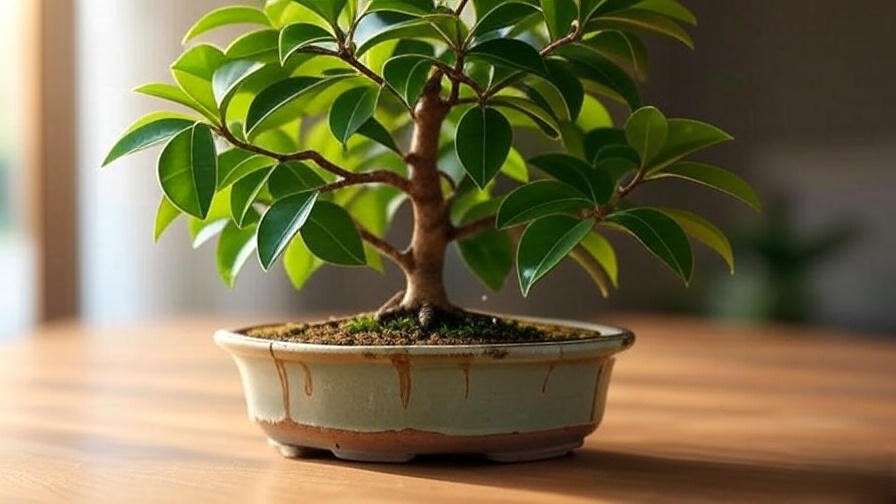
H2: FAQs About Ficus Bonsai Tree Care ❓
To address common concerns and help you care for your ficus bonsai tree with confidence, here are answers to frequently asked questions. These are designed to be concise, actionable, and packed with insights to support your bonsai journey.
- How often should I water my ficus bonsai? 💧
Water when the top inch of soil feels dry, typically every 2-4 days, depending on humidity and season. Use a moisture meter for accuracy, and ensure proper drainage to prevent root rot. Adjust frequency in winter (less often) and summer (more often). - Can a ficus bonsai survive in low light? 🌑
Ficus bonsai prefer bright, indirect light but can tolerate lower light with care. If light is limited, supplement with a grow light (12 hours daily) to prevent leaf drop and maintain growth. Avoid prolonged low-light conditions to keep your tree healthy. - Why is my ficus bonsai dropping leaves? 🍂
Leaf drop often results from stress, such as sudden light or temperature changes, overwatering, or low humidity. Check the environment, stabilize conditions, and increase humidity with a tray or misting. Gradual adjustments can prevent further loss. - How do I know when to repot my ficus bonsai? 🪣
Repot every 1-2 years, typically in spring, when roots become crowded or soil degrades. Signs include slow growth, water pooling on the surface, or roots circling the pot. Use a fresh, well-draining soil mix for best results. - What pests should I watch for on my ficus bonsai? 🐞
Common pests include spider mites, scale, and aphids. Inspect leaves regularly, especially undersides, for webbing or sticky residue. Treat with neem oil or insecticidal soap, and maintain humidity to deter infestations.
H2: Expert Tips for Long-Term Success 🏆
To ensure your ficus bonsai tree thrives for years, incorporate these expert-backed strategies into your routine. These tips, drawn from bonsai masters and personal experience, will help you maintain a healthy, stunning tree.
- Daily Care Checklist 📝
- Check soil moisture and water if needed.
- Inspect leaves for pests or discoloration.
- Rotate the tree slightly to ensure even light exposure.
- Mist leaves if humidity is low.
- Weekly Care Checklist 🗓️
- Clean leaves with a damp cloth to remove dust and improve photosynthesis.
- Check for new growth and prune as needed to maintain shape.
- Monitor humidity levels and adjust with a tray or humidifier.
- Monthly Care Checklist 📅
- Apply diluted fertilizer during the growing season.
- Inspect roots through the pot’s drainage holes for crowding.
- Assess the tree’s overall health and adjust light or temperature if needed.
- Join a Bonsai Community 🤝
Engaging with local or online bonsai groups, like the Bonsai Society of America or Reddit’s r/Bonsai, offers support and inspiration. Share photos, ask questions, and learn from experienced growers to refine your skills. - Expert Insight: “Patience is the heart of bonsai care,” says Hiroshi Tanaka, a renowned bonsai master with 30 years of experience. “Observe your ficus bonsai daily, and let its subtle changes guide your care. Small, consistent efforts yield extraordinary results.”
- Tip: Keep a bonsai journal to track watering, pruning, and growth patterns. This helps identify what works best for your tree and builds your confidence as a grower.
H2: Conclusion 🌸
Growing a thriving ficus bonsai tree is a journey of care, patience, and creativity. By mastering light, watering, pruning, and pest control, you can transform your bonsai into a stunning centerpiece that reflects your dedication. This guide has equipped you with expert tips, from selecting a healthy tree to styling it like a pro, ensuring you avoid common pitfalls and achieve long-term success. Whether you’re nurturing your first ficus bonsai or refining an existing one, apply these strategies and watch your tree flourish. 🌿
Ready to take your bonsai skills to the next level? Share your progress in the comments, explore our related articles on indoor plant care, or join our newsletter for more expert tips. Your ficus bonsai is more than a plant—it’s a living work of art. Keep growing, and enjoy the journey! 🌟

